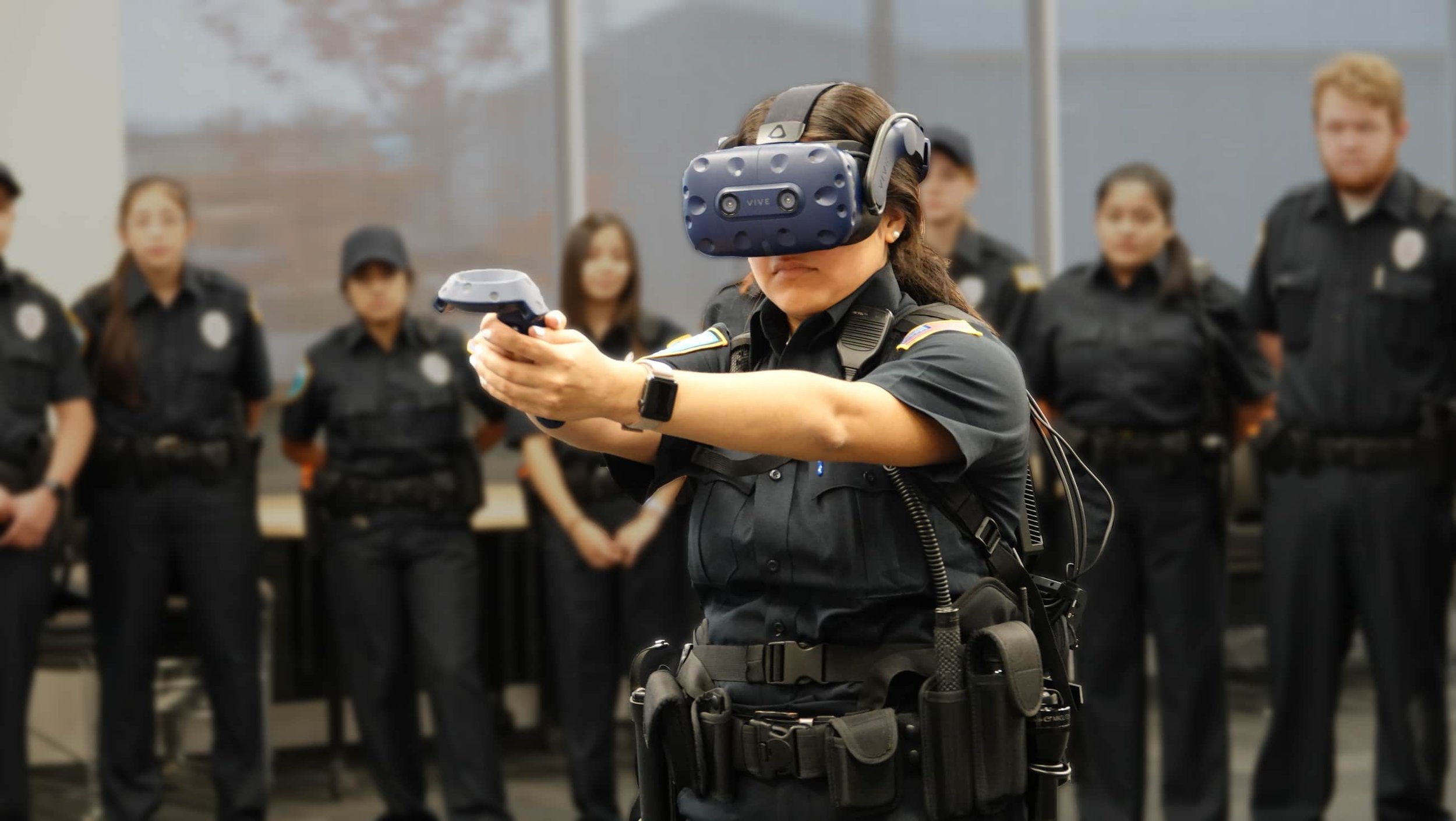Author: Amanda Childress, February 26, 2021
Police work and technology go hand-in-hand. In fact, the global law enforcement software market which was worth $10.42 billion in 2019 is expected to rise to 22.12 billion by 2027. This market develops the software which police use to organize criminal records and find suspects. Its rapid growth is driven by data, the increasing adoption of smart devices, and the rise of public security infrastructure for smart city law enforcement. This underscores the massive role of new tech advancements in transforming police work, and it brings us to our first key point.
Biometric Software
The protection of communities and of the police themselves rely heavily on the latest biometric software. While previously limited to fingerprints, today’s police databases are increasingly transitioning towards Next Generation Identification (NGI) systems. In a nutshell, NGI includes not only fingerprints but also palm prints, irises, and facial recognition data, which are all stored in encrypted police databases. Meanwhile, serial violent offenders today are also now subject to the Combined DNA Index System (CODIS). As a digital platform for DNA data, CODIS streamlines police work that involves comparing DNA profiles from different and connected cases. In addition, American law enforcement is working with the international community to digitize global biometric data through the Foreign Biometric Exchange (FBE) Program. Through the FBE, it’s easier for law enforcement to monitor and stop terrorist and transnational criminal activities.
Advanced Sensors
The use of advanced sensors help police to quickly identify and neutralize threats. For instance, the new ShotSpotter is an advanced acoustic sensor that helps police pinpoint the source of gunshots, which is especially helpful in dense neighborhoods. It’s trained to pick up “loud and impulsive sounds” at 120 to 160 decibels – the typical volume range of gunshots. Advanced sensors actually aren’t new in law enforcement. SWAT teams have always used thermal imaging to pinpoint individuals during hostile and low-visibility situations. Whether visual or acoustic, advanced sensors save lives.
Sonic Weapons
These new weapons are designed to stun suspects rather than deliver lethal force. Previously, sonic weapons made the news when they were used for crowd control. In the recent stand-off on Interstate 95, SWAT police used a sonic weapon called a Long Range Acoustic Device to put a halt to hostilities. We are likely to see more of these sonic devices being developed and deployed in the future.
Virtual Reality
Following national calls for better police training, some jurisdictions are turning to virtual reality (VR) to pick up the slack. At the Princeton Police Department (PPD), officers are learning to deescalate and manage situations better by using VR headsets. Virtual reality allows us to take information taught in a classroom setting to our officers and immerse them into scenarios that they may encounter in real life and to evaluate their skill,” explained PPD Chief Christopher Morgan. “Also, it allows the officers to better understand their skill sets and become more comfortable in many types of situations. We are the first in the state to utilize this type of training.” While they’re the first, the PPD is not the only department exploring this training option.
Artificial Intelligence
There are many ways in which artificial intelligence (AI) is transforming police work. Facial recognition technology is built on AI, and it’s now a crucial part of biometric police databases. AI can also be used to streamline the processing of image and video evidence. By analyzing patterns in the visual data, AI can greatly hasten the identification of suspects and uncovering of leads for criminal cases. Apart from that, AI can also be used similarly to differentiate counterfeit and genuine goods, which has law enforcement applications in a number of industries.
Although these aren’t the only tech advancements shaping the future of police work, these are the ones with the biggest impact on how the law is enforced here in the U.S. In the future, new technologies will play an even larger role in properly equipping the police for the job.

